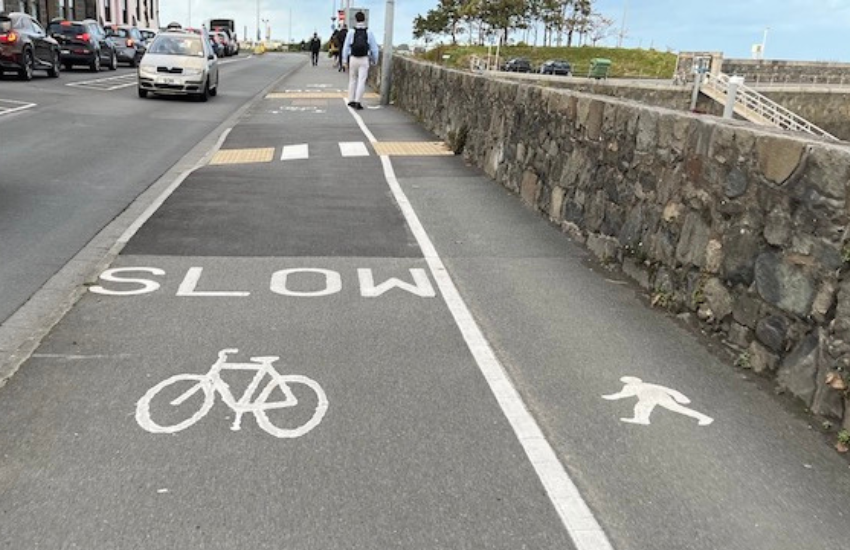


More than £800,000 was invested in initiatives to help vulnerable road users last year.
Spending on “active travel” was one of the areas in the spotlight in discussions surrounding how to make savings in the public sector.
Traffic and Highway Services spends money on initiatives like installing crossings, dropped kerbs, blister paving, lighting on crossings, bus shelters, cycle hoops, and permanent footpaths which also promote accessibility.
“Not only do these initiatives align with the States-approved On-Island Integrated Transport Strategy, they also improve the safety for all members of the community, in all forms of transport, when travelling around, and they help to improve accessibility across the island,” THS said in response to a Freedom of Information request about the costs.
“The roll-out of these initiatives also help those more vulnerable road users – such as people who use wheelchairs or mobility scooters, those with mobility issues or visual impairment, children, families and elderly members of the community, and those travelling by non- motorised modes such as on foot, by bike or by mobility scooter – to feel safer when moving around and give them more choice of modes.
“By making walking, wheeling and riding safer and more convenient, they become a more viable option for more people for more of their journeys. This has a positive impact in a number of different ways that support wider States’ objectives: improved road safety, reduced congestion, less air pollution, better health outcomes, lower emissions and higher economic productivity.”
In 2023, of a £26.5m revenue budget for Land Management, infrastructure and transport, a total of £800,982 was spent on active travel.
In addition, £94,719.55 was spent from the capital pot, this type of spending varies each year.
Comments
Comments on this story express the views of the commentator only, not Bailiwick Publishing. We are unable to guarantee the accuracy of any of those comments.